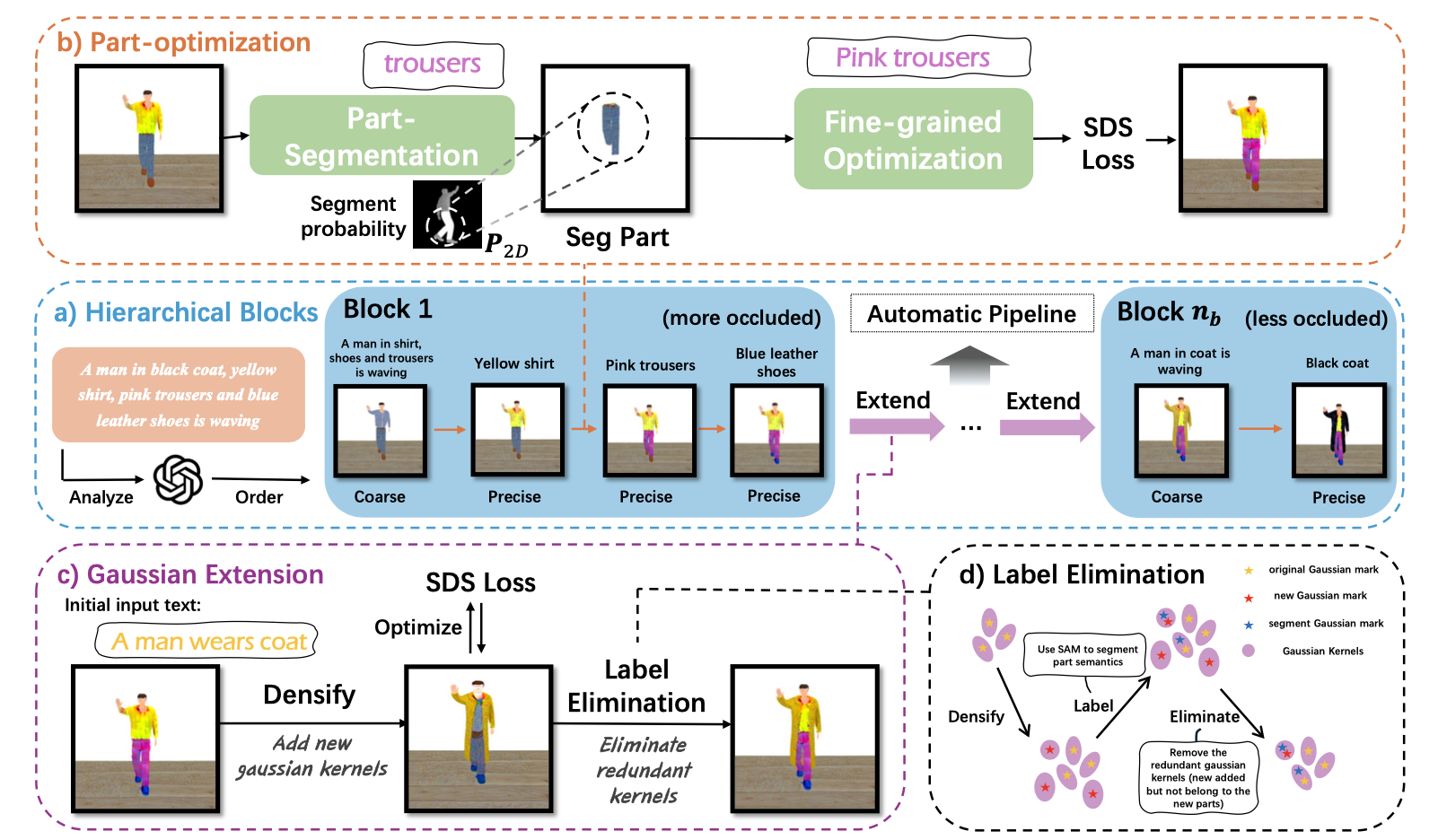Method Overview

Recent text-to-3D generation models have demonstrated remarkable abilities in producing high-quality 3D assets. Despite their great advancements, current models struggle to generate satisfying 3D objects with complex attributes. The difficulty for such complex attributes 3D generation arises from two aspects: (1) existing text-to-3D approaches typically lift text-to-image models to extract semantics via text encoders, while the text encoder exhibits limited comprehension ability for long descriptions, leading to deviated cross-attention focus, subsequently wrong attribute binding in generated results. (2) Objects with complex attributes often exhibit occlusion relationships between different parts, which demands a reasonable generation order as well as explicit disentanglement of different parts to enable structural coherent and attribute following results. Though some works introduce manual efforts to alleviate the above issues, their quality is unstable and highly reliant on manual information. To tackle above problems, we propose a automated method Hierarchical-Chain-of-Generation (HCoG). It leverages a large language model to analyze the long description, decomposes it into several blocks representing different object parts, and organizes an optimal generation order from in to out according to the occlusion relationship between parts, turning the whole generation process into a hierarchical chain. For optimization within each block, we first generate the necessary components coarsely, then bind their attributes precisely by target region localization and corresponding 3D Gaussian kernel optimization. For optimization between blocks, we introduce Gaussian Extension and Label Elimination to seamlessly generate new parts by extending new Gaussian kernels, re-assigning semantic labels, and eliminating unnecessary kernels, ensuring that only relevant parts are added without disrupting previously optimized parts. Experiments validate HCoG's effectiveness in handling complex attributes 3D assets and witnesses high-quality results.


@inproceedings{Qin2025ApplyHT,
title={Apply Hierarchical-Chain-of-Generation to Complex Attributes Text-to-3D Generation},
author={Yiming Qin and Zhu Xu and Yang Liu},
year={2025},
url={https://api.semanticscholar.org/CorpusID:278481349}
}